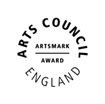Beech Group - Fantastic Foraging
Beech Group were incredibly fortunate to be visited by local self-sufficiency and wild food expert Michael White for a fascinating morning discovering more about the hidden benefits found in our natural environment.
We learnt that the knowledge of our natural remedies has been forgotten and lost over generations. The myth of the dock leaf is a famous example of this. Dock has long been thought to help with nettle sting BUT.... it it is NOT the leaf that provides the relief from nettle stings but the gel found within the base of the stem - the goo can soothe and cool the rash caused by the acid released from the nettle hairs.
Foraging is not only useful for food: The Dyer's Mazegill fungus was used by cloth merchants to create a beautiful golden coloured dye. George de Mestral, the inventor of Velcro, took his inspiration from a walk in nature when he came back he discovered that his dog was covered with burs that had attached themselves to its fur which gave him the design for his now famous hook and loop fastener.
We learnt about the many benefits of foraging: its nutrients, its positive effects on both physical and mental health and its increasing use medicine. Michael told us how he had spent three months living exclusively off foraged foods and the children marvelled at the varied and exotic diet he had sampled.
We also learnt about safety around safety when foraging, the rule of 'Don't munch on a hunch' and always to go foraging with an experienced adult. We played the game of deadly or delicious to illustrate this: A red berry v a parsley-like leaf. Most chose the leaf - most chose the leaf. The deadly water hemlock. The most poisonous plant in our country that can kill in roughly 15 minutes. Michael showed it alongside the near identical (& edible cow parsley) which is a member of the same family to stress his point. Whilst many winter red berries are poisonous, these red berries were hawthorn berries and were not only edible but a wonderful source of protein. The children were given the option to try them - their opinions ranged from 'Mmm delicious, they taste a bit like plums!' to 'Ooo, no thanks they taste like cold mashed potato!'
Michael also talked to the children about being responsible members of society when foraging and the 'rule of thirds'. One third for you, one third for the plant to make more seeds/spores and one third for the local wildlife.
We then went on a tour of the woods looking for mushrooms and wild food. We sampled garlic mustard seeds and hunted for mushrooms. We found a good selection (even though it is reaching the end of the season to some degree) and we learnt a huge amount). Thank you so much to Michael for taking the time to share his passion and to educate us about the benefits and brilliance of foraging. All the children took away a wide variety of thought-provoking facts and positive messages from the morning. I think all subjects in the curriculum were covered!
Thank you also to Bluebell for organising and for sharing your stunning woods.






